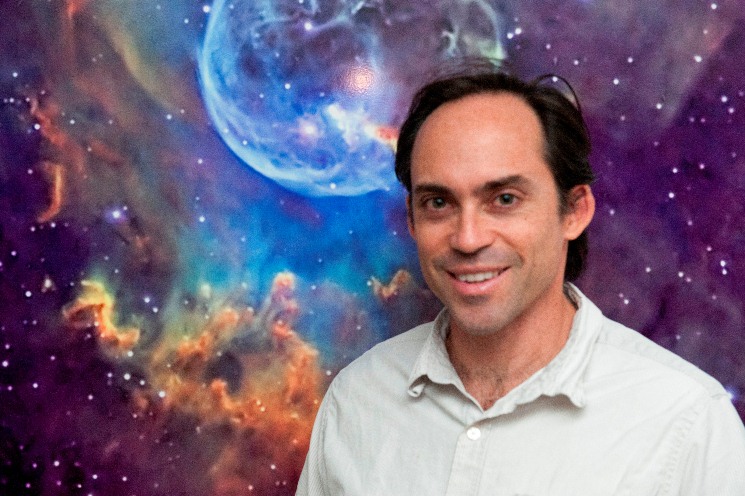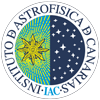Working at the limit: the lowest mass stars, coldest brown dwarfs and exoplanets
Interview with Adam Burgasser (University of California San Diego)
“There are probably more than 50 billion brown dwarfs in our Galaxy. So far we’ve catalogued only a couple of thousand!”
By Nayra Rodríguez Eugenio (IAC)

Brown dwarfs are substellar objects, with masses in between those of stars and planets. Though their existence was theorized in the 1960s, the discovery of the first brown dwarfs came about just 20 years ago. These faint and elusive objects are thought to be very abundant, accounting for between 1/6 to 1/2 of all stars in our Galaxy.
Adam Burgasser, professor at the Department of Physics of the University of California San Diego, is one of the world experts in the field of substellar objects. Indeed, his research on the coldest brown dwarfs led to the designation of a new stellar spectral class, the T dwarfs, and also to the discovery of the first L-type subdwarfs. He is particularly interested in characterizing and understanding the atmospheres of L, T, and Y dwarfs, as well as searching for multiple systems, studying magnetic activity, and measuring population statistics.
Adam Burgasser is visiting the IAC within the Severo Ochoa-CEI Canarias Campus Atlántico Tricontinental Senior Visitor Program, an initiative that aims to enhance the collaboration between the IAC and University of La Laguna staff and renowned researchers of other leading scientific institutions.
Is there a clear boundary between brown dwarfs and planets? Or is it rather a smooth transition between them?
I think we try to force a boundary between these classes because “planet” is a word we’ve been using for thousands of years. We use it to describe something very specific, the “wandering stars”, which were originally just Mercury, Venus, Mars, Jupiter and Saturn. There is a great deal of cultural, mythological, and religious connotation associated with this word, not the least of which is that we live on a planet. In the past 20 years, we’ve found thousands of new objects that may or may not be like our planets, and we are struggling to adapt this word. This is also why the “demotion" of Pluto several years ago had so much public interest. I think it is the human instinct to organize the world around us that motivates us to draw a firm line between planets and brown dwarfs.
Currently, astronomers use several different definitions to separate planets from brown dwarfs: by their internal physics (a brown dwarf fuses deuterium -a very rare isotope of hydrogen-, a planet fuses nothing), their location (a planet orbits a star, a brown dwarf can exist on its own), or some notion of their formation (a planet forms in a circumstellar debris disk, a brown dwarf forms like stars, contracting out of molecular clouds). Unfortunately, Nature does not seem to adhere to these distinctions all at once. We have plenty of evidence for objects that seem to have “formed like planets" (in a circumstellar disk) but can be massive enough to fuse deuterium; there are also “non-fusors” that are isolated objects in young clusters. In many cases, our inability to measure properties like mass or the internal state of an object, or its origin, render these definitions somewhat meaningless.
As a result, there is considerable disagreement in our community as to what is to be called a planet and what a brown dwarf. I’ve measured this in a series of polls conducted at conferences and through social media. There are at least a dozen objects where I find a 50/50 split among the community as to whether they should be called planets or brown dwarfs. And increasingly there are objects that people identify as not fitting into either category. I’ve started asking about a third option, “Something Else”, and this is a popular choice for a few tough cases such as Ross 458C (a non-fusing objecting orbiting >1000 AU from its host star) and Corot-3b (a “planet” that is >20 times the mass of Jupiter and would have fused deuterium). I’ve also found differences in naming conventions between planetary astronomers, brown dwarf astronomers, and the general public. It’s clear to me that there is nothing close to a consensus on this issue!
In my opinion, there is no “clear” boundary between planets and brown dwarfs. The definitions we have for these words are either too vague or laden with historical baggage, so it is hard for scientists to come to a consensus. I believe we will end up forging new words to describe subcategories and cross-categories for these objects, much as “dwarf planet” was introduced for objects like Pluto, Eris and the asteroid Ceres (which was a planet when it was discovered in 1801!). It is an interesting time to be a scientific linguist.
How many brown dwarfs are in the Milky Way? What can we learn about our Galaxy by studying these objects?
Our estimates based on counting sources very near the Sun and in young clusters suggest that the ratio of brown dwarfs to stars is between 1:5 to 1:1, so there are probably over 50 billion brown dwarfs in our Galaxy. So far we’ve catalogued only a couple of thousand! The fact that they are common is highlighted by the recent discovery that the third and fourth closest “star” systems are entirely composed of brown dwarfs: the binary system WISE 1049-5317AB and 250 K “frozen” brown dwarf WISE 0855-0714. Both are about 6-7 light-years away, and both were found just in the last two years. There are certainly many more nearby and very cool brown dwarfs that we haven’t discovered yet.
Brown dwarfs are an excellent population to probe the history of our Galaxy because of three unique properties: (1) they cool over time, so they behave like stellar “clocks”; (2) they never die, so every brown dwarf ever formed is still present in our Galaxy (unless it was pulled into a black hole or eaten away by a white dwarf companion); and (3) their interiors are fully mixed (we say “fully convective”), so the chemical composition of the atmosphere reflects the chemical composition of the whole brown dwarf. Add in the fact they most brown dwarfs fuse nothing but deuterium, and you have an object that preserves its chemical abundances upon formation, has been around for the entire history of the Galaxy, and can have its age estimated. A perfect probe of the chemical evolution and stellar birth rate history of our Galaxy! The catch is that these things are very faint, so we need large telescopes (like the GTC and Keck) to get enough information on enough brown dwarfs to understand the population in a statistical sense.
About 21% of the content of the Universe is what we call “dark matter”. In your opinion, what fraction of the dark matter is composed of cool stars, brown dwarfs and extrasolar planets?
Very little, certainly less than 1%. The possibility that brown dwarfs are dark matter was a major motivator for the first searches of brown dwarfs back in the 1970s and 1980s, but to make up the dark matter that must be present in our Galaxy you’d need to have 20,000 brown dwarfs for every star! We now know that there are much fewer of these objects, and because brown dwarfs are each low mass, their total mass just doesn’t add up. We also now know from cosmology experiments such as WMAP that dark matter cannot be baryonic (made of protons and neutrons), so I think the best case remains that dark matter is a new particle (or several particles) that we’ll hopefully find in the near future.
Do we have the telescopes and instrumentation needed to answering these questions? What is the next technological step to take?
For brown dwarfs warmer than 500 K (a temperature you can achieve in your oven at home!), we now have the technology to find and study the nearest examples, within 150 light-years or so. But because brown dwarfs are always cooling down, calculations show that most brown dwarfs are probably colder than 500 K; the coldest one known today is 250 K (WISE 0855-0714). Such cold “stars” emit most of their light at mid-infrared wavelengths. This is inconvenient for observations from the ground because everything around us also emits in the mid-infrared (including our bodies) and our atmosphere strongly absorbs mid-infrared light (both of these reasons also drive global warming). To study very cold brown dwarfs, we’ll need to observe them at mid-infrared wavelengths, either with new instruments such as CanariCam, or from space. The Spitzer Space Telescope, which is in orbit around the Sun, has been a fantastic tool for studying brown dwarfs, but its mission will probably end in the next 2-3 years. Fortunately, there is a new space telescope, the James Webb Space Telescope, which will permit the kind of infrared observations we need to study the “room-temperature” brown dwarfs that are probably the most common in our Galaxy.
What have been the main projects in which you have worked in collaboration with IAC researchers during your stay as a Severo Ochoa visitor? Has it been a positive visit for you?
I am working with Nicolas Lodieu, Zhenghua Zhang and Rafael Rebolo on three projects involving the lowest-mass subdwarfs, stars that formed early in our Galaxy’s history and have low abundances of metals in their atmosphere. We’re actually working on three projects over this visit, the first of which is nearly complete. This project sought to identify lithium in the atmospheres of two of the lowest-temperature subdwarfs. Lithium is an element that is destroyed in stars but preserved in brown dwarfs; in essence, we are trying to determine if these sources were brown dwarfs or not. Lithium is a really amazing element. Nearly all of the lithium in the Universe was created soon after the Big Bang, so we are looking for primordial atoms. We think that brown dwarfs may be the best objects for studying this element, because they are so long-lived and most cannot destroy this element by fusion. Unfortunately, we have a somewhat ambiguous result - there is maybe a little lithium present in the atmosphere of one object, but it’s at the limit of our detectability. Nevertheless, the investigation has been fascinating, and has opened up new questions about atmospheric chemistry in metal-poor brown dwarfs. The other two projects involve defining an infrared classification scheme for M-type subdwarfs and looking for faint companions to these sources. Stay tuned for those!
Coming to IAC has allowed me to establish some new partnerships and develop new research project ideas, both here and at ESAC in Madrid. It has also inspired me to develop a student exchange program with my home institution so student can learn both Spanish & Canarian culture as well as astrophysics. It has been an extremely fruitful visit, and a great opportunity to explore Tenerife and the surrounding islands.


